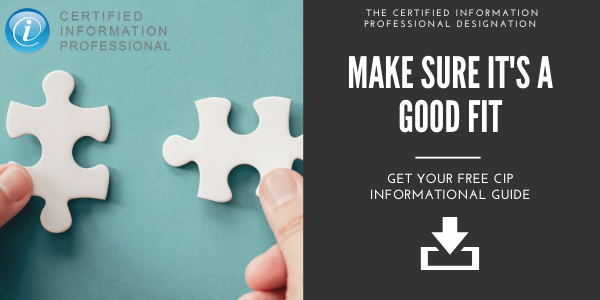Hopefully, you've heard by now that we've updated the Certified Information Professional (CIP) exam. To help answer questions and clear up any confusion, I’ve been covering each of the CIP domains in a blog series to explain the updated exam: what's new, what's changed, and how to be successful.
In the last post, we focused on Domain 1: Creating and Capturing Information. This time, we’ll be taking a look at Domain 2, Extracting Intelligence from Information.
Extracting intelligence from information is all about gaining a better understanding of the information your organization has by using a variety of tools, techniques, and automation. Let’s take a look at what’s covered in this domain.
![[Informational Guide] Is certification right for you? Get this free CIP Exam Guide to find out.](https://no-cache.hubspot.com/cta/default/332414/dcb32a30-373b-4f1b-9d7f-90425213921c.png)
Domain 2: Extracting Intelligence from Information:
- Metadata: More than "data about data", metadata provides the context required to understand information: how it's used, how it's managed, and how it is made available to users throughout the information lifecycle. This is one of the three pillars of findability.
- Taxonomies: If metadata makes up the bricks of findability, taxonomies are the blueprint. Taxonomies form the second pillar of findability by allowing users to browse information in different repositories and storage locations.
- Analytics/Machine Learning/Artificial Intelligence (AI): These tools and techniques form the third pillar of findability by extracting the contents of unstructured documents and making them available to other tools and processes. They also offer significant support for automating common information management tasks like classification and file share cleanup.
- Data Recognition, Extraction, and Standardization: These capabilities improve our ability to make sense of images as well as documents and can significantly improve the findability of business information.
- Search: Having all this information available doesn't help the organization if users are unable to find what they need.
By the end of this domain, you should have a solid grounding on how to extract the value from different types of information and how to leverage these capabilities in support of business goals and objectives. In the next post, I'll review Domain 3: Digitalizing Core Business Processes.


